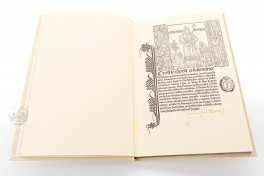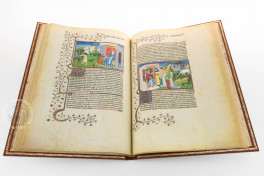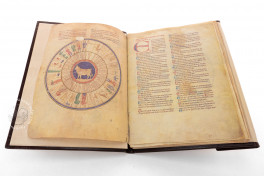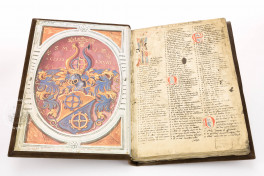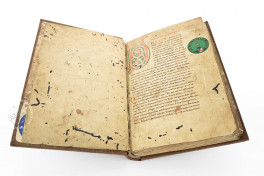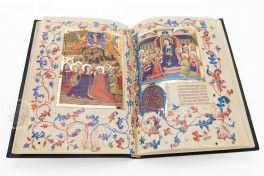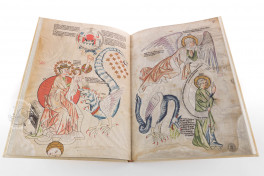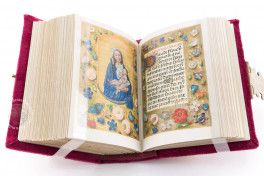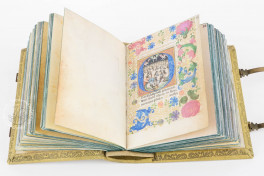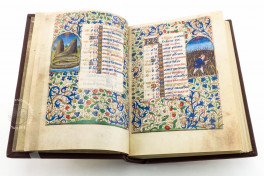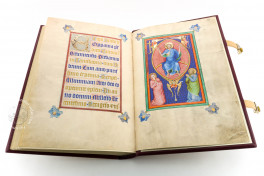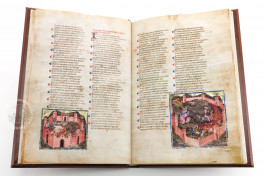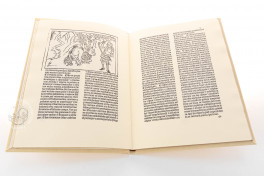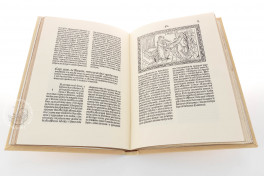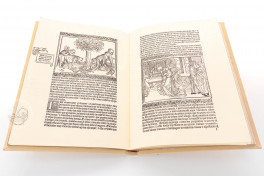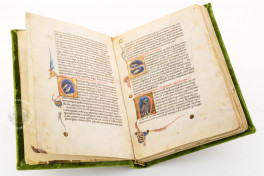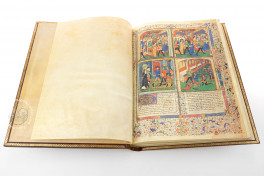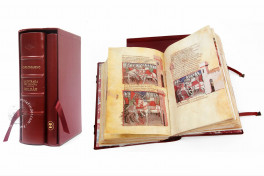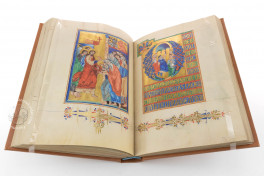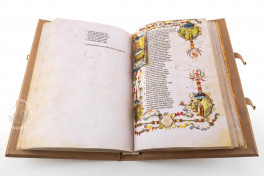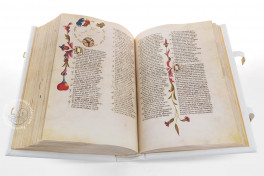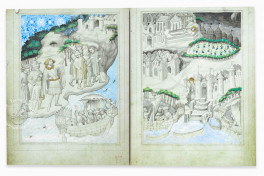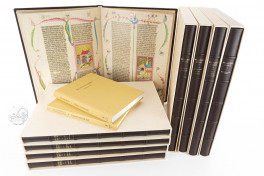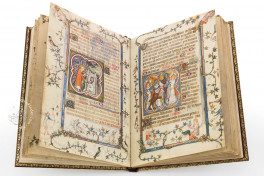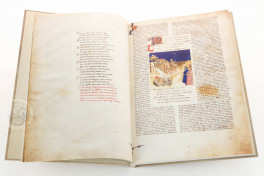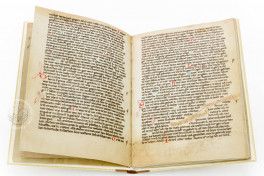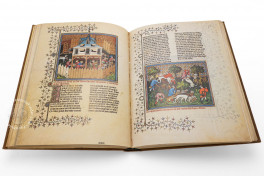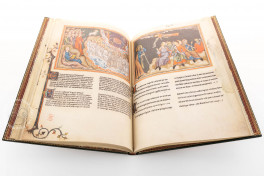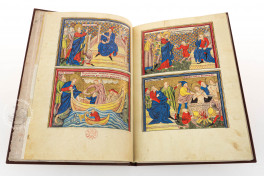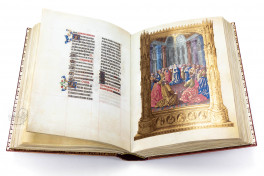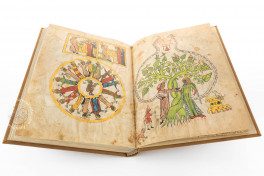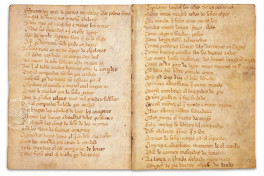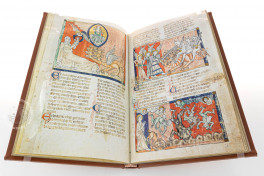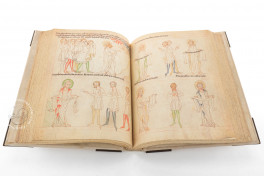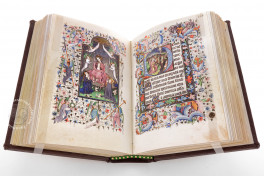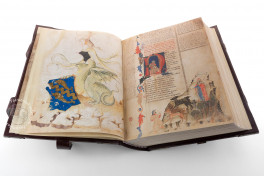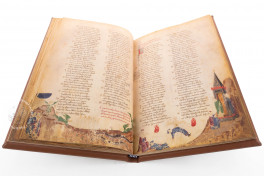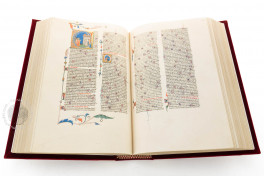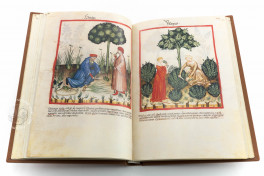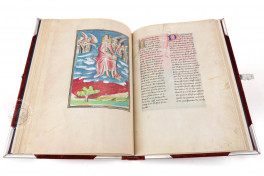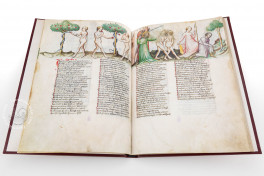Gothic art developed as a break from Romanesque styles, an assertion of distinction from Byzantine traditions. The story comes to life in Gothic manuscript illumination, with a vivacity and detail that seems to leap from the page. Clear, sometimes colorful borders serve both to contain and frame the scenes featuring beasts both real and imagined, and biblical narratives that would have thus been made more accessible than the Latin text alone.
Read more
Gothic manuscripts are often smaller than their predecessors, perhaps due to the increasing demand for books prompted by the rise of cathedral and university libraries at the time. The text in Gothic manuscripts teems with decoration in lines left blank, illustrations in the margins and the borders, designed to contain illustration and text, become another aspect of the illustration in their own right.
As texts were hand-copied from loaned or purchased texts, there is a consistency of themes that results from illustrators being influenced by the works they took inspiration from. This transcends locality, so themes often cross from the continent to the British Isles and vice versa. Like Romanesque art before it, Gothic art makes generous use of bold colors and decorative scrolls evoking arabesques that increasingly naturalistic scenes. This naturalism would give rise to the near photographic realism in later Renaissance art.
